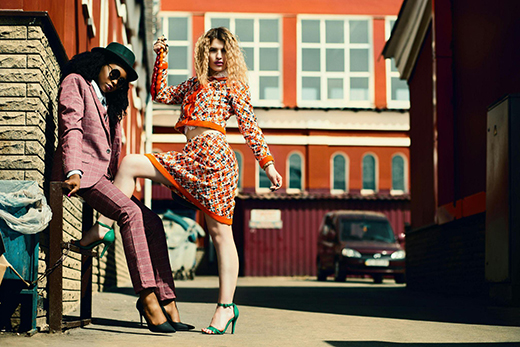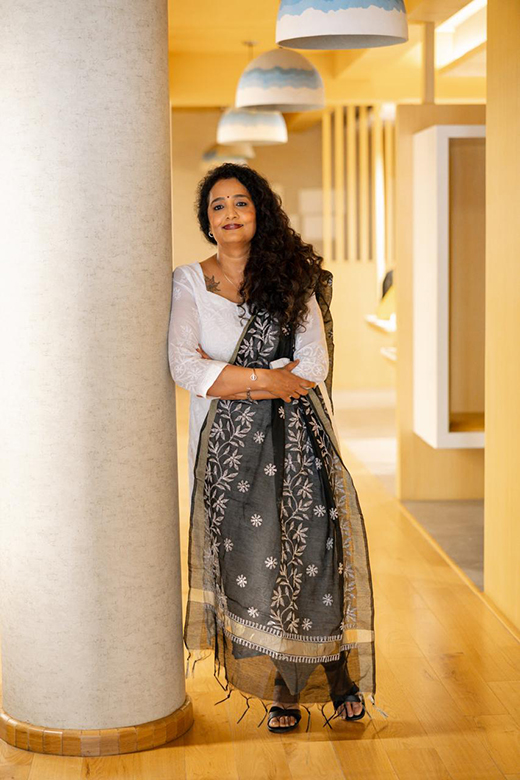Dr. Rekha B S
04-Oct-2025
Your wardrobe may be your biography!
Inputs by: Dr. Rekha B S, Co-Founder of SWA Signature Style
Your wardrobe is more than a collection of garments; it is a biography written in fabric. Each piece captures a moment: the dress of a first date, the kurta tied to family festivals, and the blazer marking a career milestone, and together they form a narrative of identity. Fashion, then, is not decoration but documentation, preserving both memory and meaning while signalling who you are and who you are becoming.
Clothes also speak a language without words. They convey moods and temperaments long before you articulate them: bright tones signal joy, muted hues reflect introspection, bold patterns project confidence, and soft fabrics offer comfort. What begins as personal choice quickly becomes social communication. Sociologist Fred Davis described clothing as a set of semiotic codes, a non-verbal system through which we broadcast belonging, rebellion, aspiration, or tradition. By choosing what to wear, we are not only dressing ourselves but also shaping how the world reads us.
The link between what we wear and how we feel has been explored by psychologists as well. The concept of “enclothed cognition”, introduced in the Journal of Experimental Social Psychology in 2012, demonstrates that the symbolic meaning of clothing affects both our mindset and our behaviour. Wearing a lab coat, for instance, was shown to improve attention to detail, while professional attire can trigger a sense of authority. This means that clothing is not just reflective of identity; it actively moulds it, turning the wardrobe into both a diary and a script.
If clothes shape our daily experiences, they also anchor our long-term memories. Many of us keep certain garments not for utility but for sentiment: the sari passed down from a grandmother, the jersey from a school championship, the wedding suit folded carefully into a box. Research in Memory Studies suggests that clothing functions as a mnemonic device, carrying sensory cues, texture, smell, and even the faint rustle of fabric that bring memories alive more vividly than photographs. In this way, wardrobes become repositories of emotion, binding past experiences to the present self.

This layering of memory also explains why wardrobes evolve as life does. Teenage rebellion often demands ripped jeans and band tees, while early adulthood introduces the polish of first jobs and formal interviews. Parenthood prioritises comfort and durability, while midlife often embraces individuality and elegance. Each phase adds new chapters to the fabric of identity. Consider Steve Jobs, whose black turtlenecks became shorthand for innovation, or Lady Gaga, whose ever-changing wardrobe turned reinvention into performance. Both demonstrate how clothing narrates different life trajectories, whether through consistency or through constant change.
The wardrobe’s role as biography extends beyond personal storytelling to social performance. Erving Goffman, in The Presentation of Self in Everyday Life, likened human interaction to theater, where clothes are part of the costume that enables us to perform various roles. A lawyer’s suit, a protester’s slogan-printed T-shirt, a bride’s lehenga – all are stage directions in the drama of social life. Through these garments, the private story of identity intersects with the public stage of expectation, making wardrobes at once intimate and communal.

(In image: Dr. Rekha B S, Co-Founder of SWA Signature Style)
In recent years, wardrobes have also become moral landscapes. The rise of sustainable and ethical fashion shows that clothes now carry values as well as aesthetics. A thrifted jacket might declare one’s resistance to fast fashion; a handwoven kurta could embody support for local artisans. Campaigns like Patagonia’s “Don’t Buy This Jacket” highlighted how clothing choices can express environmental consciousness, reminding us that fabric is never just fabric; it is philosophy, politics, and principle stitched together.
Looking ahead, the relationship between clothing and biography may deepen as technology integrates into textiles. Smart fabrics capable of monitoring health, augmented reality that allows us to relive archived outfits, or blockchain systems that trace the origin of every thread all point to a future where wardrobes document our stories in more literal ways. The closet of tomorrow may not just reflect who we are but record how we lived, turning fashion into a diary written in real time.
Cover Credits: Instagram @taylorswift